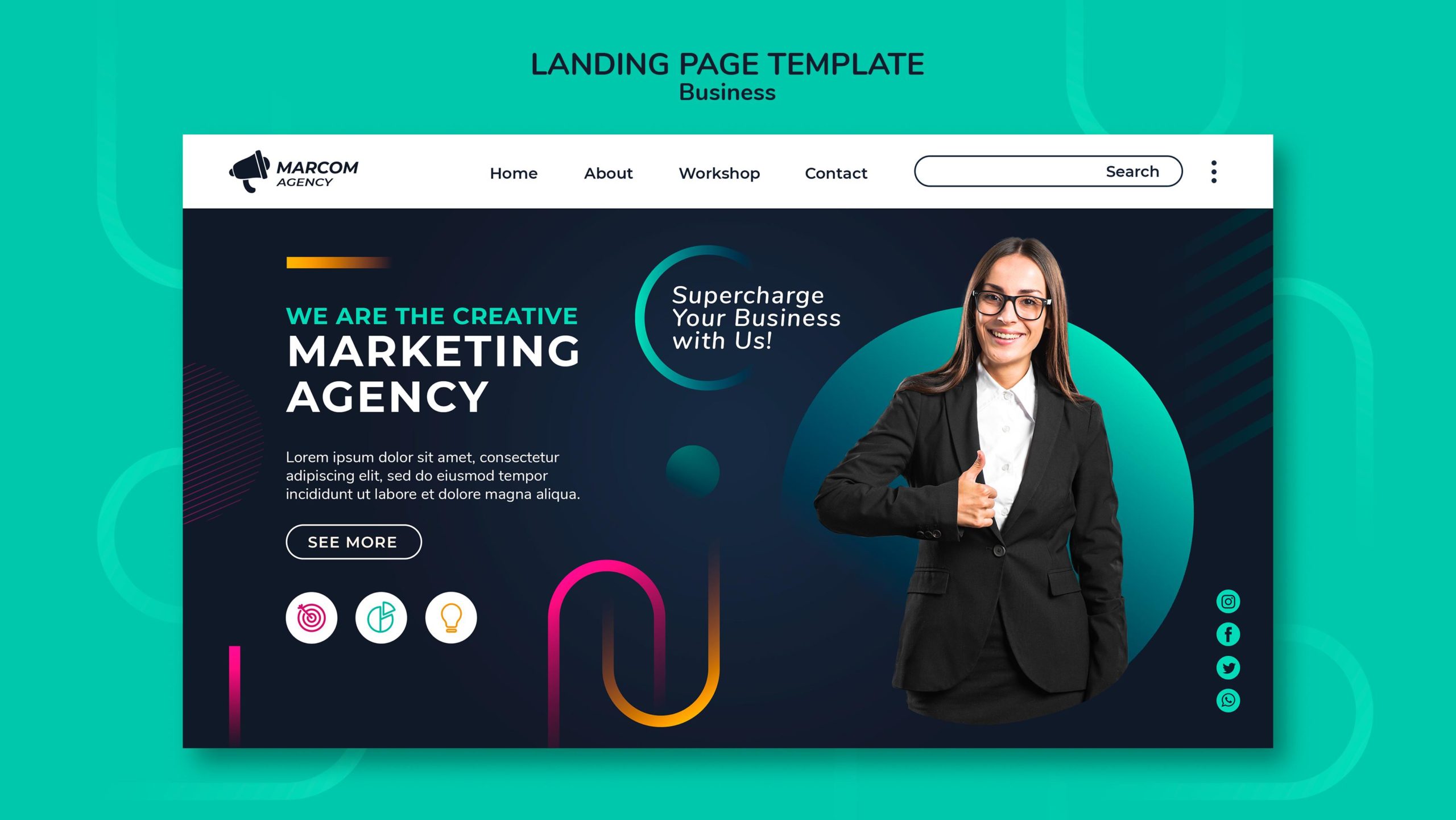
In the dynamic world of digital marketing, the importance of a well-optimized landing page cannot be overstated. Beyond aesthetics, the design of your landing page plays a pivotal role in both user experience and search engine optimization (SEO). Let’s delve into five comprehensive tips to ensure your landing page captivates visitors and excels in search rankings.
In the intricate dance between captivating design and strategic optimization, crafting an SEO-friendly landing page emerges as a powerful catalyst for digital success. These top five tips form a cohesive blueprint, ensuring that your landing page not only draws visitors but also stands tall in the competitive realm of search rankings.
As you embark on this journey, remember that the strategic placement of keywords serves as the foundation. Conduct thorough research to unearth the phrases your audience seeks, seamlessly weaving them into the fabric of your content. This not only resonates with search engines but also positions your landing page as a relevant solution for users.
1. Strategic Keyword Placement
The cornerstone of SEO-friendly landing pages lies in strategic keyword placement. Begin by conducting thorough keyword research to identify the terms your audience is searching for. Integrate these keywords seamlessly into your page title, headers, meta descriptions, and naturally within the content. This not only aids search engines in understanding your content but also enhances your page’s visibility in search results.
Example:
Suppose your landing page is promoting a digital marketing course. Incorporate keywords like “digital marketing course,” “online marketing training,” or specific terms related to your course content.
2. Mobile Responsiveness
In an era dominated by mobile devices, the significance of a mobile-responsive landing page cannot be overstated. Google prioritizes mobile-friendly pages in its search rankings, making mobile responsiveness a critical aspect of SEO. Ensure your landing page design is responsive, offering a seamless experience across various screen sizes.
Example:
Use responsive design elements to adapt your landing page for different devices, ensuring that buttons, images, and content are optimized for mobile users.
3. Optimized Page Speed
Page speed is a pivotal factor influencing both user satisfaction and SEO rankings. Slow-loading pages can lead to high bounce rates, affecting your search visibility. Optimize images, minimize HTTP requests, and leverage browser caching to enhance your landing page’s loading time. Tools such as Google PageSpeed Insights provide valuable insights and suggestions for improvement.
Example:
Compress images without compromising quality, use browser caching, and minimize unnecessary scripts to boost your landing page’s loading speed.
4. Compelling and Unique Content
Crafting compelling and unique content is not only an art but also a science that intertwines with SEO strategy. Engage visitors with valuable information, using clear and concise language. A strong call-to-action serves as the focal point, encouraging visitors to take the desired action. High-quality content not only keeps visitors on your page but also signals search engines about the relevance and value of your content.
Content, the heartbeat of any landing page, must be both compelling and unique. Weave narratives that resonate with your audience, addressing their pain points and offering solutions. A captivating call-to-action not only guides their journey but transforms clicks into conversions.
Example:
For a landing page promoting a product or service, create engaging content that highlights its unique features, benefits, and how it addresses the needs of your target audience.
5. Strategic Internal Linking
Internal linking is a powerful SEO strategy often overlooked in landing page design. Incorporate strategic internal links within your content, directing visitors to other relevant pages on your website. This not only improves navigation but also helps search engines understand the relationships between different pages, enhancing the overall structure of your website.
The art of internal linking completes this digital symphony. Strategically guide your visitors to related pages, fostering a holistic exploration of your website. Search engines recognize this interconnected web, elevating the overall SEO standing of your digital domain.
Example:
If your landing page is for a specific product, strategically link to related blog posts, testimonials, or other informative pages that provide additional context and value.
Conclusion
The digital landscape’s evolution towards mobile dominance mandates a responsive design, where the user experience seamlessly transitions across devices. Prioritizing mobile responsiveness not only aligns with Google’s algorithms but also caters to the diverse preferences of your audience.
Page speed, the unsung hero of user satisfaction, demands attention. Optimize images, streamline scripts, and embrace caching to ensure your landing page loads at the speed of expectation. Remember, a swift landing is the first step towards engaging an audience and securing their trust.
In essence, your SEO-friendly landing page is more than a mere entry point; it’s a dynamic gateway to conversion and success. Continuously refine and optimize, staying attuned to evolving trends and user expectations. As you navigate this intricate fusion of design and strategy, let your landing page be a beacon, beckoning users and search engines alike to witness the synergy of excellence.





